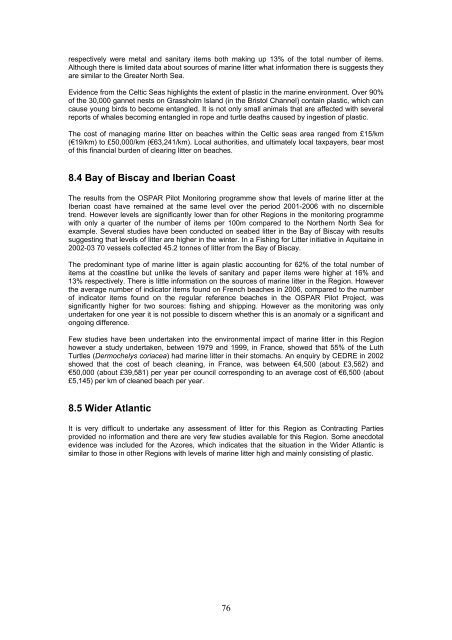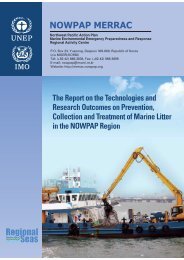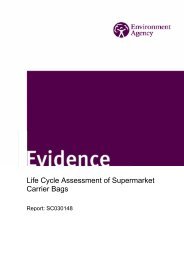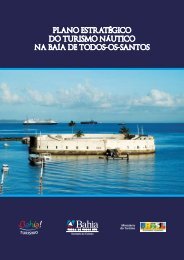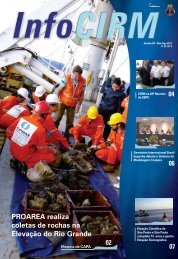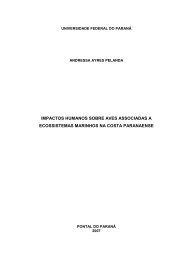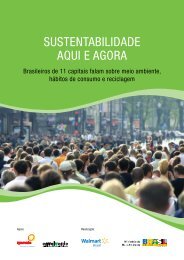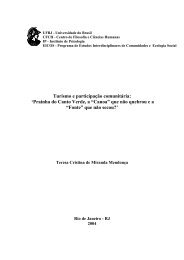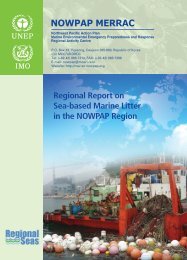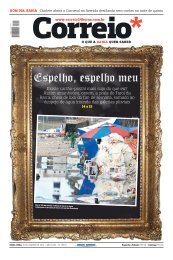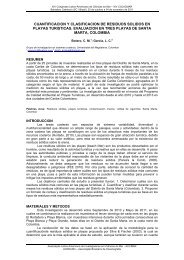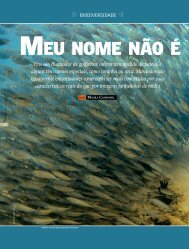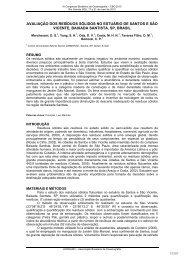view pdf - Seas At Risk
view pdf - Seas At Risk
view pdf - Seas At Risk
- No tags were found...
You also want an ePaper? Increase the reach of your titles
YUMPU automatically turns print PDFs into web optimized ePapers that Google loves.
espectively were metal and sanitary items both making up 13% of the total number of items.Although there is limited data about sources of marine litter what information there is suggests theyare similar to the Greater North Sea.Evidence from the Celtic <strong>Seas</strong> highlights the extent of plastic in the marine environment. Over 90%of the 30,000 gannet nests on Grassholm Island (in the Bristol Channel) contain plastic, which cancause young birds to become entangled. It is not only small animals that are affected with severalreports of whales becoming entangled in rope and turtle deaths caused by ingestion of plastic.The cost of managing marine litter on beaches within the Celtic seas area ranged from £15/km(€19/km) to £50,000/km (€63,241/km). Local authorities, and ultimately local taxpayers, bear mostof this financial burden of clearing litter on beaches.8.4 Bay of Biscay and Iberian CoastThe results from the OSPAR Pilot Monitoring programme show that levels of marine litter at theIberian coast have remained at the same level over the period 2001-2006 with no discernibletrend. However levels are significantly lower than for other Regions in the monitoring programmewith only a quarter of the number of items per 100m compared to the Northern North Sea forexample. Several studies have been conducted on seabed litter in the Bay of Biscay with resultssuggesting that levels of litter are higher in the winter. In a Fishing for Litter initiative in Aquitaine in2002-03 70 vessels collected 45.2 tonnes of litter from the Bay of Biscay.The predominant type of marine litter is again plastic accounting for 62% of the total number ofitems at the coastline but unlike the levels of sanitary and paper items were higher at 16% and13% respectively. There is little information on the sources of marine litter in the Region. Howeverthe average number of indicator items found on French beaches in 2006, compared to the numberof indicator items found on the regular reference beaches in the OSPAR Pilot Project, wassignificantly higher for two sources: fishing and shipping. However as the monitoring was onlyundertaken for one year it is not possible to discern whether this is an anomaly or a significant andongoing difference.Few studies have been undertaken into the environmental impact of marine litter in this Regionhowever a study undertaken, between 1979 and 1999, in France, showed that 55% of the LuthTurtles (Dermochelys coriacea) had marine litter in their stomachs. An enquiry by CEDRE in 2002showed that the cost of beach cleaning, in France, was between €4,500 (about £3,562) and€50,000 (about £39,581) per year per council corresponding to an average cost of €6,500 (about£5,145) per km of cleaned beach per year.8.5 Wider <strong>At</strong>lanticIt is very difficult to undertake any assessment of litter for this Region as Contracting Partiesprovided no information and there are very few studies available for this Region. Some anecdotalevidence was included for the Azores, which indicates that the situation in the Wider <strong>At</strong>lantic issimilar to those in other Regions with levels of marine litter high and mainly consisting of plastic.76


